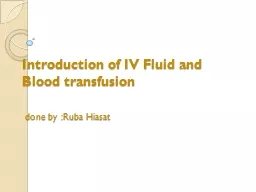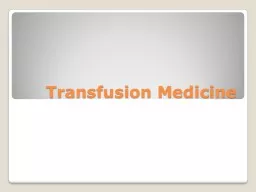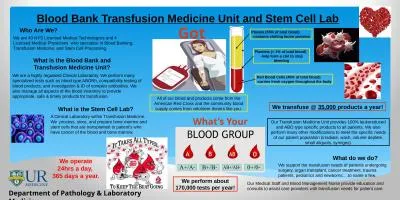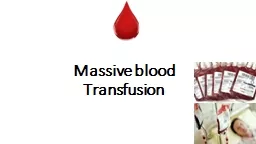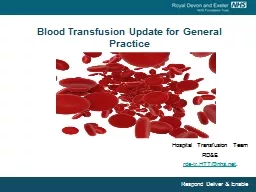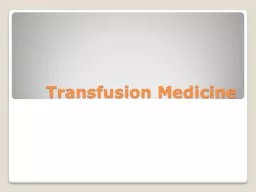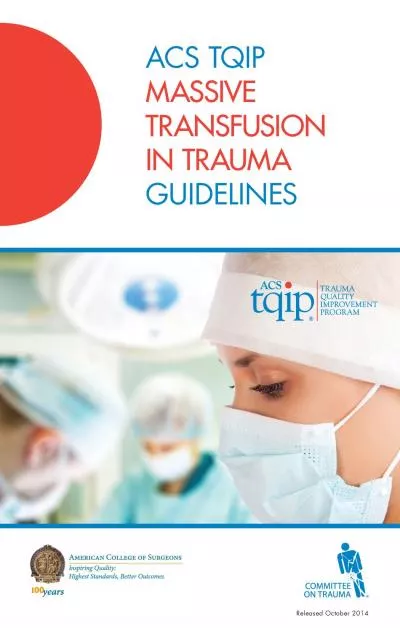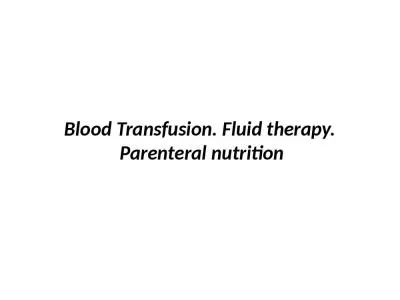PPT-Introduction of IV Fluid and Blood transfusion
Author : molly | Published Date : 2021-01-27
done by Ruba Hiasat Outline DISTRIBUTION of Body Fluid Compartments Normal values in extracellular space Normal maintenance need Osmolality Osmolarity and
Presentation Embed Code
Download Presentation
Download Presentation The PPT/PDF document "Introduction of IV Fluid and Blood trans..." is the property of its rightful owner. Permission is granted to download and print the materials on this website for personal, non-commercial use only, and to display it on your personal computer provided you do not modify the materials and that you retain all copyright notices contained in the materials. By downloading content from our website, you accept the terms of this agreement.
Introduction of IV Fluid and Blood transfusion: Transcript
Download Rules Of Document
"Introduction of IV Fluid and Blood transfusion"The content belongs to its owner. You may download and print it for personal use, without modification, and keep all copyright notices. By downloading, you agree to these terms.
Related Documents

